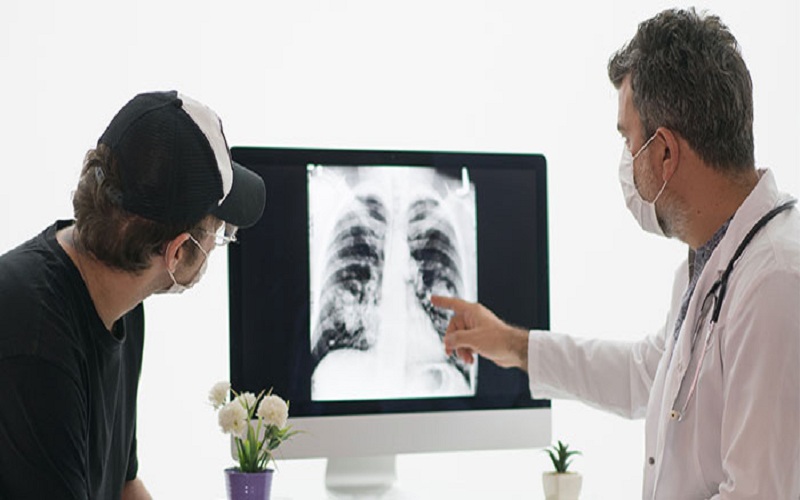From 2017 to 2021, approximately 9,000 cases of lung cancer were reportedly diagnosed in Singapore. During the said period, lung cancer in Singapore was the third most common cancer in the country. Putting the said factor into consideration, understanding lung cancer, its types, and so on, is essential when it comes to achieving safe and effective treatment.
Common types of lung cancer
There are two primary types of cancer and they are based on the appearance of lung cancer cells when placed under the microscope: small cell lung cancer (SCLC) and non-small cell lung cancer (NSCLC).
SCLC
According to the American Cancer Society, SCLC accounts for about 10 to 15% of all lung cancers across the globe. It is also called oat cell cancer because of the fact that its cancer cells look like oats. It should be noted that this particular type of cancer is the more aggressive kind of lung cancer and has the tendency to spread quickly to other body parts, oftentimes prior to diagnosis. That is why it is essential to regularly undergo lung cancer specialist in Singapore checkups.
Also, it should be noted that many studies almost directly link SCLC to cigarette smoking due to the fact that it is rarely diagnosed among non-smokers. Furthermore, due to the fact that it can spread rapidly at alarming rates, treatment typically involves immunotherapy and chemotherapy. In some cases, radiation therapy may also be required.
NSCLC
NSCLC is the most prevalent type of lung cancer, and it is further subdivided into three subtypes based on their type of cells. Read on for details.
- Adenocarcinoma – According to studies, this is the most common subtype of NSCLC, especially for non-smokers. This condition originates in the granular cells of the lungs that produce mucus. Also, it is commonly found in the outer parts of the lung and has the potential to grow more slowly compared to other types of lung cancer, which may result in better prognosis and treatment.
- Large cell (undifferentiated) carcinoma – This type of cancer may appear in basically any region of the lung. In general, treatment for this kind of cancer is quite challenging due to the fact that it tends to spread and grow faster than any kind of cancer.
- Squamous Cell Carcinoma – This particular kind of cancer begins in the squamous cells, which are thin as well as flat cells that resemble fish scales that line the interior of the lung airways. Squamous cell carcinoma is usually developed in the central part of the lungs and within close proximity to the bronchus, which is the primary airway of the lungs.
Less common types of lung cancer
- Lung carcinoid tumours – These tumours are slow-growing and basically represent a small number of all lung cancers, and they usually have a better prognosis compared to NSCLC or SCLC.
- Mesothelioma – This kind of lung cancer usually develops in the pleura or the lining of the lungs, and it is often linked to inappropriate and prolonged exposure to asbestos and other hazardous substances.
- Other rare cancers – Cancers such as lymphomas as well as sarcomas can sometimes originate in the lungs. However, it is important to note that they are relatively uncommon.
Treatment
With regard to treatment, it should be noted that it is relative and heavily depends on the kind of cancer that is diagnosed, its stage, its spread rate, and the overall health of the patient. Some of the most tried and tested forms of treatment include the following:
- Surgery – This is usually performed during early-stage lung cancer in Singapore and involves removing the tumour and part of the lungs.
- Radiation therapy – This form of treatment utilises cutting-edge high-energy rays in an effort to eradicate cancer cells. It is often performed as a primary treatment or combined with other doctor-approved therapies.
- Chemotherapy – This form of treatment includes the utilisation of powerful medicines to destroy rapidly-growing cancer cells in the lungs and other parts of the body.
- Targeted therapy – Present-day drugs target distinct mutations within cancer cells and are often effective for specific types of NSCLC.
- Immunotherapy – This kind of treatment utilises a patient’s own immune system in an effort to effectively and safely fight cancer. If done properly, it can boost the immune system so that it can naturally attack cancer cells.
Summing up
With vast improvements in the medical sector, it can be said that lung cancer treatments that are administered by lung cancer specialist in Singapore personnel have become more effective, safer, and everything in between. Despite this, it is important not to be complacent and remember that it starts with having regular checkups and developing a clear understanding of the different kinds of lung cancer.




